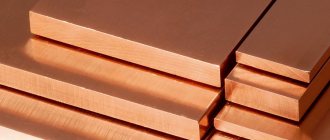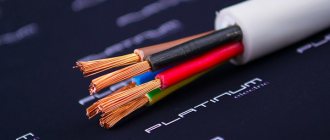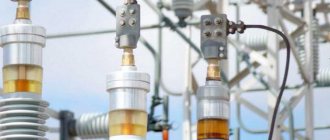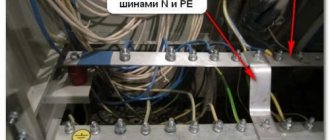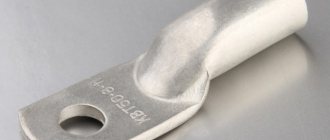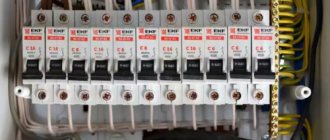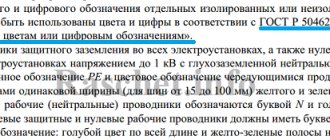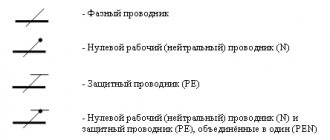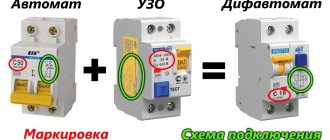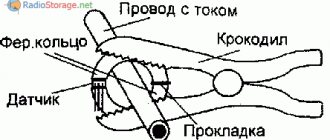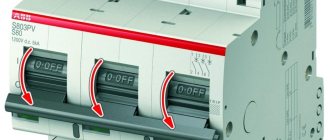Features and application of copper busbars
For the production of electrical busbars, copper strips of the highest degree of purification from impurities are used. Also for the manufacture of products, conductors with a round cross-section intertwined are used. The main application of tires is the production of components for electrical equipment and the manufacture of electrical parts.
The following types of copper busbars are in demand:
- oxygen-free products practically do not contain foreign impurities, withstand temperatures well, are welded and can be soldered;
- tires M1 and M2 contain oxygen, are characterized by high wear resistance and a long service life;
- solid CMT busbars are made from a standard copper alloy and are used for the installation of durable and reliable busbar trunking;
- soft SHMM tires are used in various fields of activity, including metallurgy and aircraft manufacturing.
In addition to the indicated types of material, other types of electrical copper busbars are also in demand on the market. The products are universal in use and do not corrode or oxidize, are well processed, and have design versatility.
Features of the selection of copper busbars
Visually, an electrical busbar made of copper has the shape of a bar with a rectangular cross-section. You can compare the product to a sheet of metal of increased length and thickness. Standard bar width sizes range from 8 to 250 mm. The minimum and maximum thickness are 1.2 and 80 mm, respectively.
When choosing electrical busbars made of copper alloys, the following criteria are taken into account:
- operating conditions of the product, depending on the maximum current load, products with different ratios of thickness and width are selected;
- Products are supplied in coils and lengths, pressed and drawn. The choice of these parameters is made by the buyer based on his own preferences and installation features;
- The maximum permissible heating temperature of a copper busbar is 70 degrees. When choosing the thickness of the product, this indicator should be taken into account, as well as the ambient temperature. The table of permissible loads shows data based on an air temperature of 25 degrees;
- If you have financial capabilities, it is better to choose busbars with a reserve for current load, in order to avoid product failure due to voltage surges and short circuits.
The operational reliability of copper busbars made in accordance with the requirements of regulatory documents has been confirmed in practice. High-quality material without foreign impurities fully complies with the declared characteristics.
Calculator
Calculation of cable cross-section can be done using a calculator. According to the current regulatory and technical documents and the conditions of normal trouble-free operation, during operation, long-term current loads on cables are determined, first of all, by their diameter and the material from which they are made.
Reducing the standard cross-sectional area of current-carrying busbars is, of course, economical. This step significantly reduces the cost of the required materials and work, but critically increases the risk of overheating of the wiring, destruction of insulating coatings and the occurrence of short circuits with further, much worse, consequences. This may cause fire or electric shock to people.
On the other hand, excessively exceeding the cross-section of conductors leads to a significant increase in costs for materials and installation work, which is also undesirable. A calculator for calculating wire cross-section based on power consumption can be easily found online, but, as a rule, this kind of program is very demanding in terms of accuracy and the number of initial parameters. There are times when a calculator for calculating cable load is not available, or information on parameters is incomplete and speculative.
So how to calculate the cross-section and length of the cable so as not to lose money and comply with safety standards? There are such ways. To begin calculating the cross-section of the wire based on power consumption, it is necessary to calculate this estimated power consumption. This is done according to the formula:
What kind of lighting do you prefer?
Built-in Chandelier
P = (P1+P2+..P n )*K*J
Where:
- P—total power consumption;
- ( P 1… Pn ) - power of consumers from 1 to n;
- K - simultaneity coefficient, shows the number of consumers simultaneously using the network (conventionally accepted as 0.8);
- J is the safety factor, shows the estimated value of the power reserve for possible future consumers (usually taken equal to 1.5-2).
In addition to power, an important factor when choosing a cable is the material of manufacture. Different materials have different resistivities and, accordingly, produce different voltage drops over a constant length. Copper and aluminum are predominantly used. The choice is ultimately up to the consumer. Data for the most common voltages in everyday life and industry are given in the tables below.
Calculation table for selecting the diameter of copper wires
For aluminum
Cable cross-section by length and load
In everyday conditions, in the process of manufacturing cables, wires and extension cords, the following formula is used:
I = P / U * cos φ, in which:
- I - current strength, (Amps);
- P - power, (Watts);
- U—mains voltage, (Volts);
- cos φ is a dimensionless coefficient, usually taken equal to 0.95–1.
Using this formula and the table below, you can quickly select the optimal transverse diameter for a specific length of the busbar.
Dependence of power, current and wire length on cross-section
An example calculation is as follows: for a cable 75 meters long with a current of 20 amperes with an estimated power consumption of 4.5 kilowatts, you should choose a wire with a total cross-section of 10 square millimeters. You can use a single-core cable with the same cross-sectional area, or a multi-core cable with the same total area. It should be mentioned that when determining the length of the proposed wiring, it is necessary to provide some margin - about fifteen to twenty centimeters - for the proposed switching (terminals, welding, soldering, etc.).
Advantages of copper busbars
Copper electrical busbars are more expensive than their aluminum counterparts, but have superior technical characteristics. Purchasing copper busbars is beneficial for the following reasons:
- due to high thermal conductivity, the copper busbar will withstand a significantly higher current load compared to aluminum analogues;
- when transmitting energy, losses on the copper busbar are minimized;
- elasticity, resistance to stretching and other mechanical loads without loss of technical characteristics is an important advantage of the product;
- Due to its resistance to changes in temperature and humidity, and the ability to withstand high voltages, a copper busbar is a more economical purchase than its aluminum counterpart.
The objective advantages of the product make it possible to assemble distribution installations with compact dimensions based on copper electrical busbars. The use of such products is becoming increasingly popular and relevant.
Tire selection
The main electrical equipment of power plants and substations (generators, transformers, synchronous compensators) and devices in these circuits (switches, disconnectors, etc.) are connected to each other by conductors of different types, which form the current-carrying parts of the electrical installation.
Let's consider the types of conductors used in power plants and substations. In Fig. Figure 1 shows, in a simplified manner, without disconnectors, the elements of the circuits of thermal power plants and IES.
At some operating power plants, the GRU is located in the main building, for example, in the machine room, and the entire section from the terminals of the generator G to the facade wall (section AK) is made of rigid busbars.
Current-carrying parts in switchgears of 35 kV and above are usually made of steel-aluminum AC wires. In some outdoor switchgear designs, part or all of the busbar can be made of aluminum pipes.
In the circuits of 6-10 kV lines, the entire busbar up to and behind the reactor, as well as in switchgear cabinets, is made of rectangular aluminum busbars. Cable lines go directly to the consumer.
In the block there is a generator - transformer at the IES section AB
VG
auxiliary transformer (Fig. 1, b) is carried out with a complete phase-shielded current conductor.
Rice. 1. To the selection of conductors in the main electrical circuits: elements of thermal power plant circuits (a); IES and NPP (b);
For section ED
from
T2
to the auxiliary switchgear, a closed 6 kV current conductor is used.
In the circuit of the backup transformer for auxiliary needs (ZhZ section) it can be made with a cable or flexible wire. The choice of one or another connection method depends on the relative position of the outdoor switchgear, the main building and the backup technical unit.
Just like at a thermal power plant, all busbars in switchgears of 35 kV and above are carried out with AC wires.
At substations, in the open part, AC wires or rigid busbars with aluminum pipes can be used. The connection of the transformer with a closed 6-10 kV switchgear or with a 6-10 kV switchgear is carried out by a flexible suspended conductor, a bus bridge or a closed complete conductor. RU 6-10 kV uses rigid busbar.
Busbars and branches from them to electrical devices (busbar) 6-10 kV from rectangular or box-shaped conductors are mounted on supporting porcelain insulators.
For better heat transfer and ease of use, tires are painted with alternating current phase A
in yellow, phase
B -
green and phase
C -
red; at constant current, the positive bus is red, the negative bus is blue.
According to the PUE, busbars of electrical installations and busbars within open and closed switchgears of all voltages are not checked for economic current density.
Selecting a tire section
produced by heating (according to the permissible current). This takes into account not only normal, but also post-emergency modes, as well as modes during repairs and the possibility of uneven distribution of currents between bus sections. Selection condition:
Expert opinion
It-Technology, Electrical power and electronics specialist
Ask questions to the “Specialist for modernization of energy generation systems”
Copper Wire Load Calculation Table | n | Yandex Zen Cross-section of copper core, mm Electrical appliance power, W 0.35 100 500 0.5 700 0.75 900 1.0 1200 1.2 1500 1.5 1800 2000 2.0 2500 2.5 3000 3500 3.0 4000 3.5 4500 5000 5.0 6000. Ask, I’m in touch!
Permissible current loads on copper busbars
When choosing a busbar, the buyer does not need to calculate the product parameters. It is enough to know the maximum permissible current in the system, direct or alternating. Using the table below, you can select the appropriate cross-section of the electrical busbar and buy products in the required volume.
| Busbar cross-section | Direct current, A | Alternating current, A |
| Copper electrical busbar 15×3 | 210 | 210 |
| Copper electrical busbar 20×3 | 275 | 275 |
| Copper electrical busbar 25×3 | 340 | 340 |
| Copper electrical busbar 30×4 | 475 | 475 |
| Copper electrical busbar 40×4 | 625 | 625 |
| Copper electrical busbar 40×5 | 705 | 700 |
| Copper electrical busbar 50×5 | 870 | 860 |
| Copper electrical busbar 50×6 | 960 | 955 |
| Copper electrical busbar 60×6 | 1145 | 1125 |
| Copper electrical busbar 60×8 | 1345 | 1320 |
| Copper electrical busbar 60×10 | 1525 | 1475 |
| Copper electrical busbar 80×6 | 1510 | 1480 |
| Copper electrical busbar 80×8 | 1755 | 1690 |
| Copper electrical busbar 80×10 | 1990 | 1900 |
| Copper electrical busbar 100×6 | 1875 | 1810 |
| Copper electrical busbar 100×8 | 2180 | 2080 |
| Copper electrical busbar 100×10 | 2470 | 2310 |
| Copper electrical busbar 120×8 | 2600 | 2400 |
| Copper electrical busbar 120×10 | 2950 | 2650 |
The NTCM company offers to buy electrical copper busbars in a large assortment. The company's warehouse offers products in various standard sizes. Excellent technical characteristics, competitive prices, short delivery times for products to any region of the country are the main advantages of ordering electrical busbars from NTCM.
Permissible continuous current for rectangular busbars
| Dimensions, mm | Copper bars | Aluminum tires | Steel tires | |||||||
| Current*, A, with the number of stripes per pole or phase | Dimensions, mm | Current*, A | ||||||||
| 1 | 2 | 3 | 4 | 1 | 2 | 3 | 4 | |||
| 15 x 3 | 210 | 165 | _ | 16×2,5 | 55/70 | |||||
| 20 x 3 | 275 | — | — | — | 215 | — | — | — | 20×2,5 | 60/90 |
| 25 x 3 | 340 | — | — | — | 265 | — | — | — | 25 x 2.5 | 75/110 |
| 30 x 4 | 475 | — | — | — | 365/370 | — | — | — | 20 x 3 | 65/100 |
| 40 x 4 | 625 | -/1090 | — | — | 480 | -/855 | — | — | 25 x 3 | 80/120 |
| 40x 5 | 700/705 | -/1250 | — | — | 540/545 | -/965 | — | — | 30x 3 | 95/140 |
| 50x 5 | 860/870 | -/1525 | -/1895 | — | 665/670 | -/1180 | -/1470 | — | 40×3 | 125/190 |
| 50×6 | 955/960 | -/1700 | -/2145 | — | 740/745 | -/1315 | -/1655 | — | 50×3 | 155/230″ |
| 60×6 | 1125/1145 | 1740/1990 | 2240/2495 | — | 870/880 | 1350/1555 | 1720/1940 | — | 60 x 3 | 185/280 |
| 80×6 | 1480/1510 | 2110/2630 | 2720/3220 | — | 1150/1170 | 1630/2055 | 2100/2460 | — | 70 x 3 | 215/320 |
| 100×6 | 1810/1875 | 2470/3245 | 3170/3940 | — | 1425/1455 | 1935/2515 | 2500/3040 | — | 75 x 3 | 230/345 |
| 60 x 8 | 1320/1345 | 2160/2485 | 2790/3020 | — | 1025/1040 | 1680/1840 | 2180/2330 | — | 80 x 3 | 245/365 |
| 80 x 8 | 1690/1755 | 2620/3095 | 3370/3850 | — | 1320/1355 | 2040/2400 | 2620/2975 | — | 90×3 | 275/410 |
| 100×8 | 2080/2180 | 3060/3810 | 3930/4690 | — | 1625/1690 | 2390/2945 | 3050/3620 | — | 100×3 | 305/460 |
| 120×8 | 2400/2600 | 3400/4400- | 4340/5600 | — | 1900/2040 | 2650/3350 | 3380/4250 | — | 20×4 | 70/115 |
| 60 x 10 | 1475/1525 | 2560/2725 | 3300/3530 | — | 1155/1180 | 2010/2110 | 2650/2720 | — | 22 x 4 | 75/125 |
| 80 x 10 | 1900/1990 | 3100/3510 | 3990/4450 | — | 1480/1540 | 2410/2735 | 3100/3440 | — | 25 x 4 | 85/140 |
| 100 x 10 | 2310/2470 | 3610/4325 | 4650/5385 | 5300/6060 | 1820/1910 | 2860/3350 | 3650/4160 | 4150/4400 | 30×4 | 100/165 |
| 120 x 10 | 2650/2950 | 4100/5000 | 5200/6250 | 5900/6800 | 2070/2300 | 3200/3900 | 4100/4860 | 4650/5200 | 40×4 | 130/220 |
| 50×4 | 165/270 | |||||||||
| 60×4 | 195/325 | |||||||||
| 70×4 | 225/375 | |||||||||
| 80×4 | 260/430 | |||||||||
| 90x 4 | 290/480 | |||||||||
| 100×4 | 325/535 | |||||||||
*The numerator shows the values of alternating current, the denominator shows the values of direct current.
